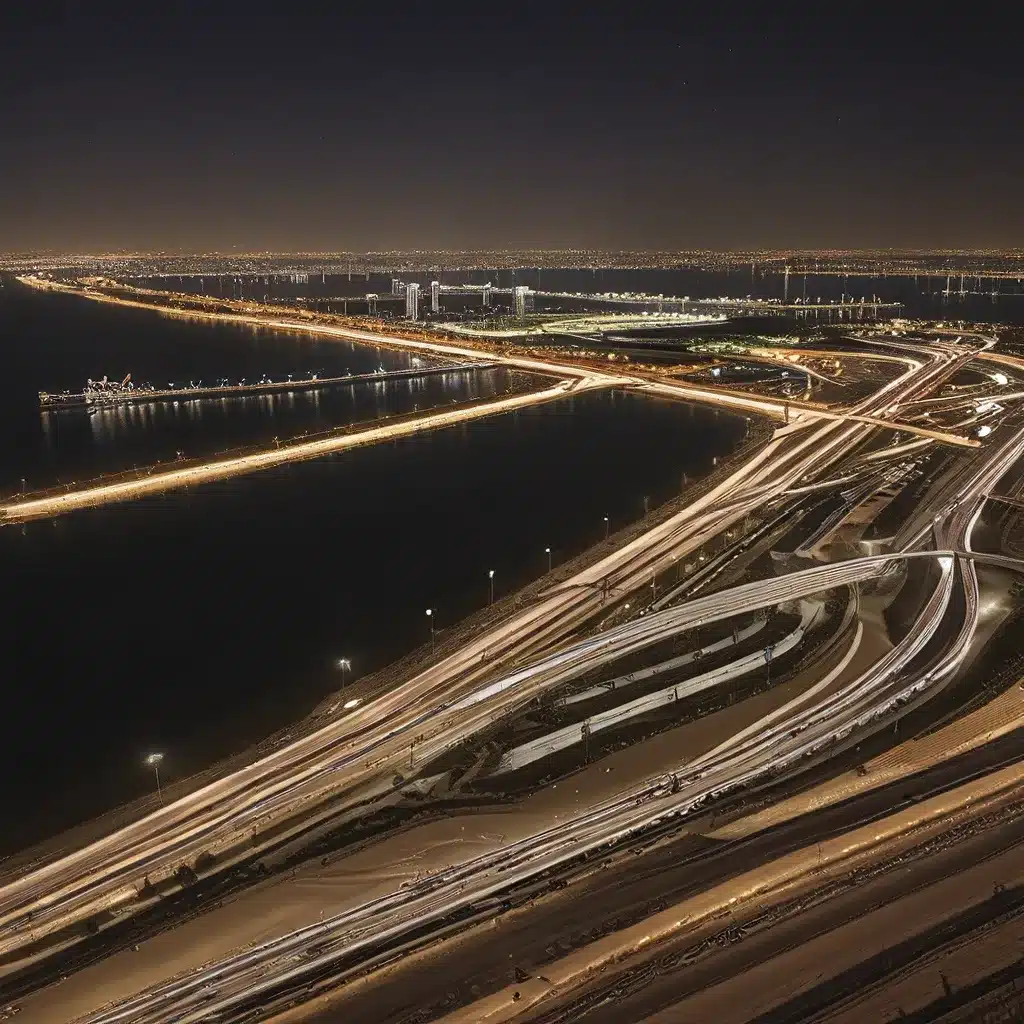
The Losail International Circuit is a world-class racing facility that has become synonymous with the thrilling Qatar F1 Grand Prix. Nestled in the desert just outside of Doha, this state-of-the-art circuit has captivated motorsports enthusiasts from around the globe with its unique combination of high-speed action and stunning visual spectacle.
Designing a Motorsports Masterpiece
Conceived in 2003, the Losail International Circuit was built with the express purpose of hosting premier motorsports events. Designed by the renowned German architect Hermann Tilke, the circuit’s layout is a true testament to his expertise in crafting challenging and visually striking racing venues.
The 5.38-kilometer track features a total of 16 turns, including a mix of fast-paced straightaways and technical, twisting sections that put the skills of even the most experienced drivers to the test. The circuit’s design not only provides for thrilling on-track action but also takes full advantage of its desert location, with the undulating dunes and serene backdrop creating a stunning visual canvas.
Illuminating the Night Sky
One of the most unique features of the Losail International Circuit is its state-of-the-art lighting system. The entire track is illuminated by over 5,000 floodlights, transforming the desert night into a veritable day-like racing environment. This innovative lighting setup allows for optimal visibility, ensuring that drivers and spectators can fully immerse themselves in the adrenaline-fueled spectacle.
The decision to host the Qatar F1 Grand Prix as a night race further amplifies the circuit’s visual appeal. The bright lights, combined with the sleek silhouettes of the Formula 1 cars and the backdrop of the Doha skyline, create a truly mesmerizing sight that is unmatched in the world of motorsports.
Adapting to the Desert Challenges
Racing in the desert environment of Qatar presents a unique set of challenges for teams and drivers alike. The drop in temperature from the scorching daytime heat to the cooler night can have a significant impact on tire performance and car aerodynamics, requiring meticulous analysis and strategic adjustments.
Teams must closely monitor data to understand how the cooler temperatures will affect tire grip and wear, ensuring that their pit stop strategies and car setups are optimized for these unique conditions. Moreover, the visibility under the artificial lighting, while bright, differs from that of daylight racing, requiring drivers to adapt their visual references and braking points.
The sand from the surrounding desert can also settle on the track, affecting grip levels and making the surface more abrasive on the tires. This added complexity requires teams to carefully consider their tire management strategies and closely coordinate with their drivers to ensure optimal performance.
A Global Stage for Qatar
The Qatar F1 Grand Prix has become more than just a motorsports event; it has evolved into a global platform that showcases the country’s culture, hospitality, and technological prowess. The influx of international visitors for the Grand Prix provides a significant boost to the local economy and tourism sector, with hotels, restaurants, and businesses benefiting from the increased footfall.
The event also serves as a medium for cultural exchange and international engagement, as fans, teams, and media from around the world come together to experience the blend of tradition and modernity that Qatar has to offer. From the vibrant local culture to the country’s rich history and modern advancements, the Grand Prix provides a unique opportunity to promote Qatar as a premier tourist destination.
Towards a Sustainable Future
As the world of Formula 1 moves towards a more sustainable future, the Qatar Grand Prix is also embracing this shift. The organizers are continuously exploring alternative energy sources to power the event and implementing practices that reduce its environmental impact, aligned with the broader sustainability goals of the sport.
This commitment to sustainability not only enhances the event’s reputation but also contributes to the broader objectives of environmental conservation within the sporting world. The Qatar Grand Prix aims to build a legacy that transcends the realms of motorsport, inspiring future generations, promoting technological advancements, and driving forward initiatives that will impact the sporting, technological, and environmental landscapes in the years to come.
The Losail International Circuit: A Shining Example
The Losail International Circuit has firmly established itself as a standout venue in the world of motorsports. Its unique combination of thrilling on-track action, stunning visual spectacle, and adaptation to the desert environment have made it a favorite among drivers, teams, and fans alike.
As the Qatar F1 Grand Prix continues to captivate audiences around the globe, the Losail International Circuit stands as a shining example of how a world-class racing facility can not only deliver an exhilarating experience but also serve as a platform for cultural exchange, technological innovation, and sustainable progress. For motorsports enthusiasts, a visit to this illuminated desert oasis is a must-see experience that will leave an indelible mark on the senses.
